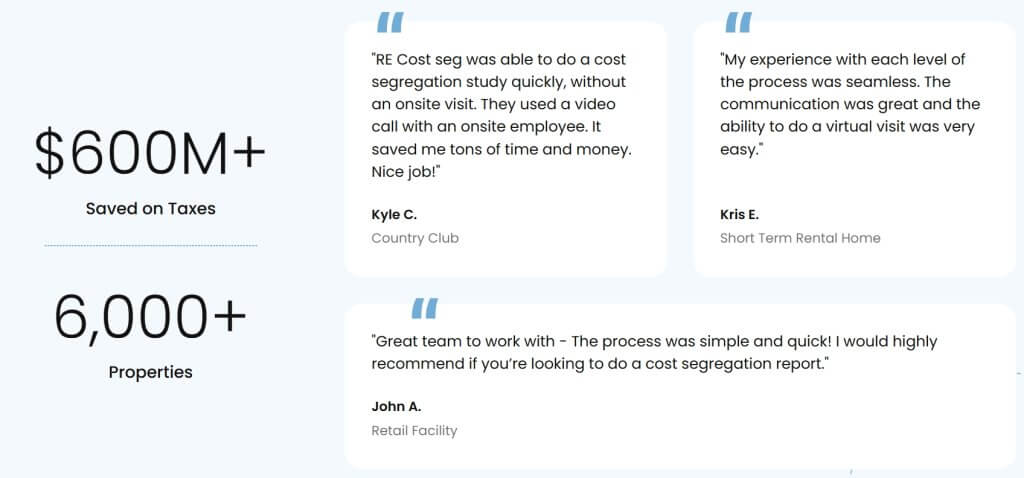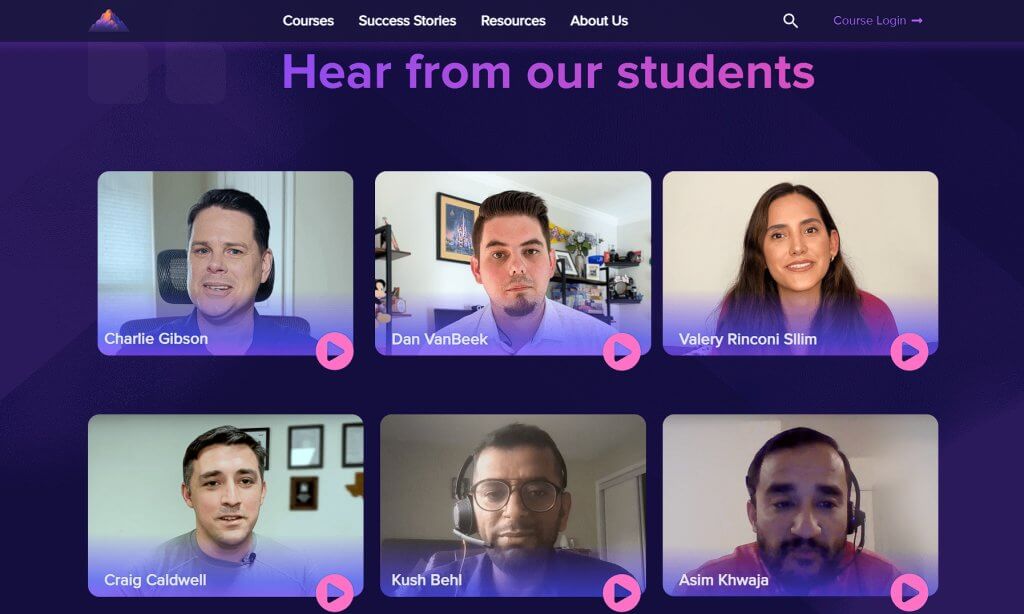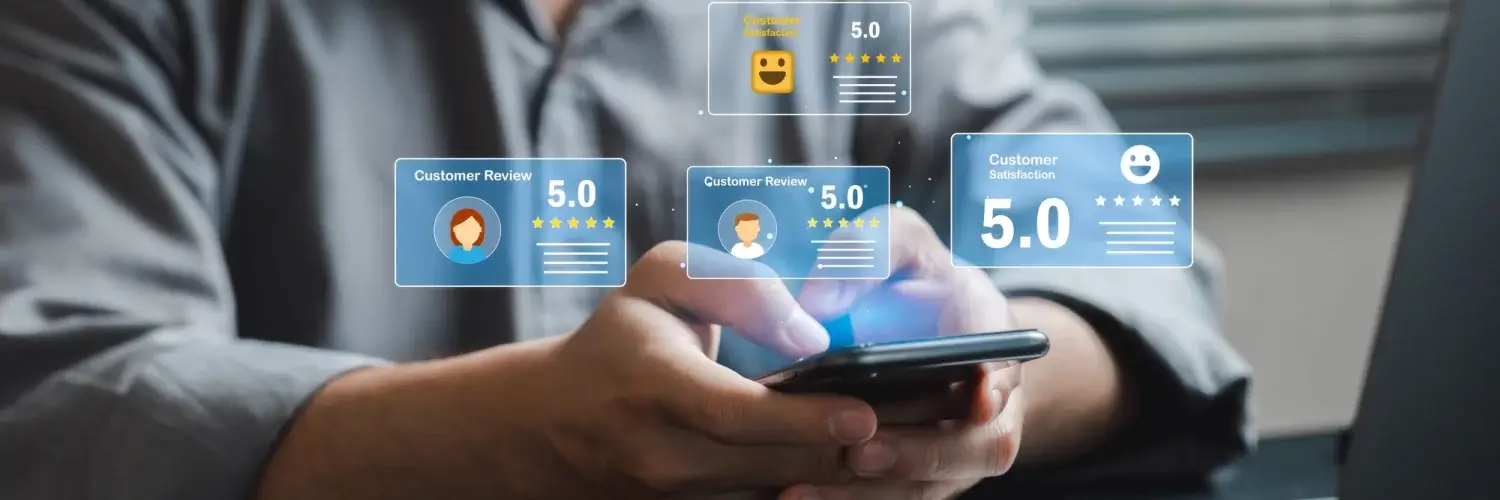People trust people. When you’re shopping online and see a product that has 500+ five-star reviews, you’re more likely to buy it.
That’s the core idea behind social proof – people are naturally inclined to follow the actions of their peers once they see those actions have given positive results. For businesses, social proof builds credibility and reduces the perceived risk of making a purchase decision.
But there’s more than one way to use social proof, and not all forms are equally effective. Some are strong enough to move people to act. Others feel like filler.
If you want to actually improve conversions, you need to know what kind of proof matters and how to use it in the right places.
In this article, we’ll explore six proven types of social proof and show you practical ways to implement them on your website. You’ll learn which forms work best for different business models and how to collect the evidence you need to convince potential customers that you’re the right choice.
1. Showcase Relatable Customer Testimonials
Customer testimonials work because they tell authentic stories from people who’ve already taken the leap with your product. They create trust through shared experiences.
Research backs this up: Most marketers report that customer testimonials directly improve conversion rates.
But not just any testimonial will do the job. Generic praise like “Great service!” doesn’t help people picture themselves as your customer. The best testimonials sound like real conversations. They highlight specific problems, describe what wasn’t working, and explain how your offer helped.
To implement testimonials effectively:
- Place them strategically at decision points on your website, such as product pages, pricing pages, and near CTA buttons.
- Use the customer’s full name, photo, and company when possible to add credibility.
- Focus on specific results and benefits rather than vague praise.
- Include testimonials that address common objections your potential customers might have.
- Keep them concise. Testimonials containing 3-5 sentences work best for readability.
- Organize testimonials by industry or use case to help prospects find relevant experiences.
- Update your collection regularly to keep content fresh.
When collecting testimonials, ask specific questions like “What problem did our product solve for you?” or “What specific results have you achieved?” These prompts generate more valuable feedback than open-ended requests.
RE Cost Seg is a brand that demonstrates this approach perfectly. As a company providing cost segregation services for real estate investors and owners, they’ve strategically placed client testimonials throughout their website.
What makes their approach effective is how they showcase real property owners discussing specific tax savings and return on investment figures. Their testimonials address common concerns about the cost segregation process and highlight the smooth experience of working with their team.

Source: recostseg.com
When done right, testimonials turn skepticism into confidence and browsers into buyers. They don’t oversell things but let existing customers explain where you excel. And that’s often all it takes.
2. Take Customer Testimonials to the Next Level with Video
Video testimonials pack a powerful punch that text simply can’t match. They capture genuine emotions, body language, and vocal tones that build deeper connections with potential customers.
When real customers share their experiences on camera, viewers pay attention.
Testimonial videos made by real people, not brands, get 85% more views than branded content. That’s a clear sign viewers respond better when something feels honest and personal.
To create effective video testimonials:
- Keep videos brief. 60-90 seconds is ideal for maintaining viewer attention.
- Script lightly, but don’t over-rehearse. Authenticity matters more than perfection.
- Focus on one specific problem and solution per video rather than covering everything.
- Include relevant context about the customer’s situation before using your product.
- Add captions to accommodate viewers watching without sound.
- Film in natural environments when possible rather than sterile studios.
- Create a simple process for customers to record testimonials remotely if they can’t visit in person.
- End with clear results or outcomes the customer achieved.
When requesting video testimonials, offer guidance without being controlling. Provide 3-4 questions that help structure their thoughts but let their personality shine through.
Destination Certification uses this strategy brilliantly in the cybersecurity certification training space. Their website features several short video testimonials from IT professionals who’ve completed their certification programs.
These videos show real students discussing their career advancement after earning certifications through Destination Certification’s courses.
What makes these testimonials compelling is how they address common concerns about learning complex security concepts and passing difficult exams. Students share specific details about how the training materials prepared them for certification tests and helped them secure promotions or new positions.

Source: destcert.com
This way, visitors don’t have to imagine the outcome. They see and hear it from someone who’s already been through it. That’s often the push someone needs to take the next step.
3. Highlight Renowned Partners
Showcasing partnerships with recognized brands instantly transfers trust and credibility to your business. When customers see that established companies have chosen to work with you, they assume you meet high standards.
This association elevates your brand in the customer’s mind and reduces perceived risk in doing business with you.
To effectively highlight partnerships:
- Display partner logos prominently on your homepage where visitors can’t miss them.
- Create a dedicated partners or “companies we work with” section on your website.
- Include brief explanations of partnership benefits when relevant.
- Get explicit permission before displaying any partner logos.
- Feature the most recognizable brands first to maximize impact.
- Group partners by industry or category if you have many to showcase.
- Regularly update your partner showcase as you add new relationships.
- Consider adding a brief case study for major partnerships to add depth.
When approaching potential partners, focus on creating mutually beneficial relationships rather than just asking to use their logo. Offer clear value in return for the brand association.
Sewing Parts Online executes this strategy perfectly in the sewing machine parts and supplies market. Their homepage features a rotating carousel prominently displaying logos of industry-leading manufacturers like Brother, Janome, Pfaff, and other top sewing machine brands.
This strategic placement immediately signals to visitors that they’re dealing with an authorized retailer of genuine parts and supplies.
For sewing enthusiasts who recognize these established brands, seeing these partnerships creates immediate confidence that Sewing Parts Online isn’t selling knockoffs or low-quality components. The carousel placement in the header means visitors see this social proof before they even start browsing products.
This simple but effective implementation helps convert hesitant first-time buyers who might otherwise worry about parts compatibility or authenticity when shopping at a specialized online retailer rather than directly from manufacturers.
4. Display Media Mentions from Well-Known Brands
When popular media outlets feature your business, it creates instant credibility. Media mentions work as third-party endorsements, suggesting that professional journalists or editors found your company noteworthy enough to cover.
This form of social proof stands out because these organizations have built trust with audiences over years or even decades.
To leverage media mentions:
- Create a dedicated “As seen on” or “Featured in” section on your homepage.
- Request permission before using media logos if the mention wasn’t substantial.
- Link each logo to the actual article or segment when possible.
- Include brief quotes from the coverage alongside logos.
- Prioritize placement of the most prestigious or relevant outlets.
- Refresh this section regularly as you gain new media coverage.
- Consider adding the publication date to establish timeline relevance.
- Use these mentions in email signatures and marketing materials, too.
To gain media attention, develop relationships with journalists covering your industry, create newsworthy content, and use press releases strategically for major announcements.
OrthoBracing implements this tactic excellently in the orthopedic support and recovery equipment market. Their homepage features a prominent section displaying the logos of major media networks, including NBC, ABC, Fox News, and CBS.
This strategic showcase immediately signals to potential customers that their bracing products and cold therapy machines have received mainstream attention and validation. For consumers researching orthopedic recovery options (often during stressful periods following injuries or surgeries), these familiar media logos provide reassurance about product quality and efficacy.
The clean, organized display of these recognizable brands creates a powerful impression without cluttering the site.
This approach allows OrthoBracing to effectively overcome the natural skepticism many consumers feel when purchasing medical support equipment online rather than through traditional healthcare channels.
5. Showcase Your Important Milestones
Highlighting your business milestones turns abstract claims into concrete achievements.
This social proof form works because it provides tangible evidence of your experience, growth, and impact in the market.
Milestone statistics tell a story of proven success that customers can easily grasp, turning your company history into compelling social proof.
To turn your milestones into a conversion booster:
- Focus on numbers that demonstrate scale, reach, and experience rather than vanity metrics.
- Present statistics visually with clean graphics, counters, or infographics for maximum impact.
- Include the year of founding, customers served, products sold, geographic reach, and growth percentages.
- Place milestone showcases strategically on your homepage and About page.
- Update numbers regularly to reflect current achievements.
- Provide context that helps visitors understand why each milestone matters.
- Balance quantity metrics with quality indicators like retention rates.
- Consider creating an interactive timeline for major company achievements.
When selecting which milestones to highlight, prioritize those most relevant to customer concerns about your reliability and capability.
RapidDirect, a manufacturer that produces custom machine parts, nails this method. Their website features a “Some Numbers About Us” section that displays critical milestones achieved in precision manufacturing.
They showcase their years of experience creating custom machine parts, the impressive number of countries where they’ve shipped products, their total customer count, the volume of successfully manufactured components, and the size of their partner network.
For potential clients in need of precision manufacturing services, these statistics directly address key concerns about production capacity, experience with diverse projects, and reliability. The clean, bold graphics make the numbers immediately digestible, even for visitors quickly scanning the page.
By quantifying their accomplishments in the custom parts manufacturing industry, RapidDirect transforms what could be empty claims about expertise into verifiable evidence of their established position in a technically demanding field.
6. Share Thorough Customer Success Stories
Customer success stories pack a persuasive punch that brief testimonials can’t match. These in-depth case studies take prospects on a journey from problem to solution to results, creating a narrative they can envision for their own business.
It’s no surprise that interviews, which are the foundation of good case studies, rank among the top three content types that deliver the highest ROI for marketers.
To create effective customer success stories:
- Structure each case study with a clear problem, solution, and measurable results format.
- Include specific metrics and percentage improvements wherever possible.
- Focus on one primary challenge and outcome per story for clarity.
- Use direct quotes from the customer throughout the narrative.
- Keep stories concise. 900-1,400 words typically works best.
- Include relevant images of the customer using your product or service.
- Create multiple formats from each story (blog post, PDF download, YouTube video, social snippets).
- Feature diverse customers representing different industries or use cases.
- Add a clear CTA at the end of each success story.
When conducting customer interviews, ask questions that dig into specific challenges they faced before finding your solution and concrete results after implementation.
Zapier, a workflow automation platform, demonstrates this strategy brilliantly. Their customer success stories section features dozens of detailed case studies showing how businesses use their platform to connect apps and automate repetitive tasks.
What makes Zapier’s approach stand out is the brand’s focus on measurable outcomes. Each case study highlights specific time savings, growth percentages, or productivity gains. They showcase companies from diverse industries, helping prospects find success stories relevant to their own situation.
Zapier lets customers explain complex automation workflows in their own words, creating authentic narratives about overcoming business challenges.
This technique allows the company to transform abstract benefits into concrete business impacts that potential customers can envision achieving themselves.
Over to You
The most successful businesses carefully collect, curate, and showcase social proof strategically.
Each strategy we’ve explored leverages the trust you’ve already built with existing customers to win over new ones.
Now, start with one approach that fits your current resources and customer base, then measure its impact on your conversion rates. Your customers are already forming opinions about your brand, so put those with positive experiences to work.





